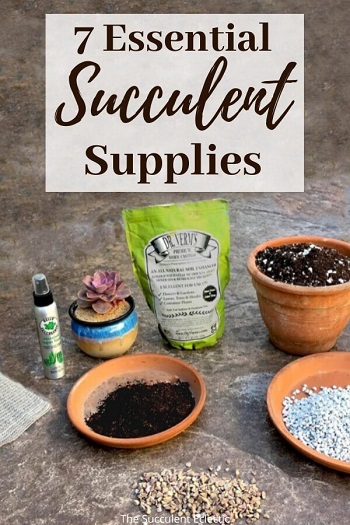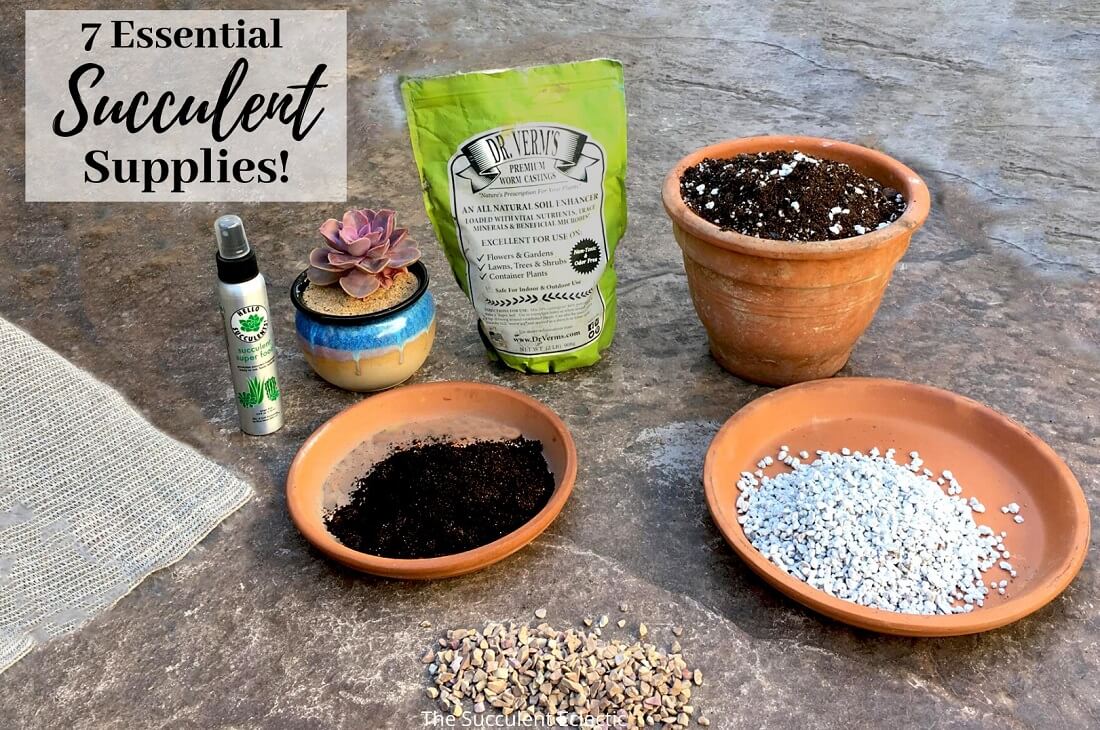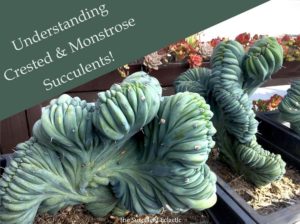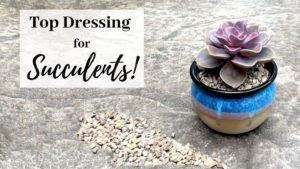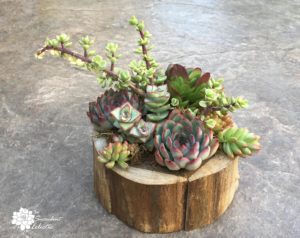One of the many (many) reasons I love this succulent addiction hobby is how easy it is to get started. All you really need is fast-draining succulent soil and a place to plant and you’re good to go. And succulents of course — but you don’t even need a whole plant. You can start your succulent collection with cuttings from someone else’s plant. How cool is that? While this is all true, there are some succulent tools I use all. the. time. And there are some succulent supplies in addition to the soil that I consider essential for a growing collection. Can you grow succulents without them? Definitely. But these supplies make it so much easier to water succulents properly, get the lighting right, treat and prevent insects — to grow healthy, happy plants. Let’s take a look at 6 essential succulent supplies and how to use them.
Succulent Garden Supplies
In this Post We'll Cover:
{Please note, some links in this post may be affiliate links to sites that pay me a small commission if you click on the link and make a purchase. This commission is at absolutely no cost to you. I only recommend products and companies that I have worked with and truly love! ~Kat}
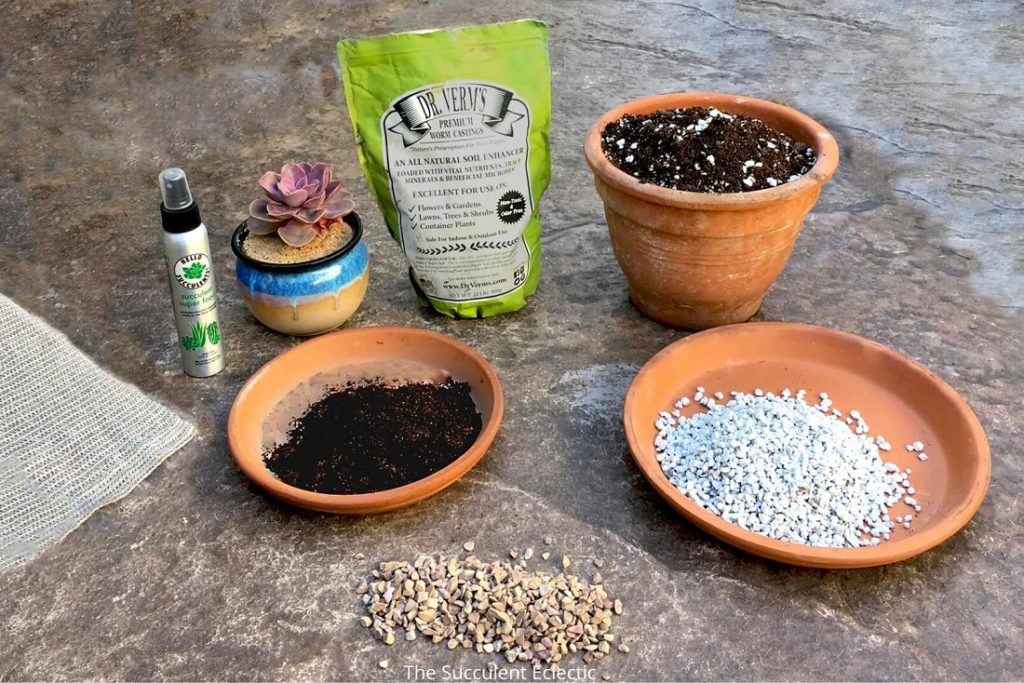
I want to show you the supplies that make it easy for me to keep my succulents lush and how and why I use them. Many problems you may have with succulents can be remedied by these products. You can jump straight to my Amazon store of curated succulent basics to check them out or read on for detailed information.
Here are the succulent supplies I consider essential:
- Fast-draining succulent soil
- Pumice
- Coconut Coir
- Worm castings
- Inorganic top dressing for succulents
- Shade cloth
Fast-Draining Soil for Succulents
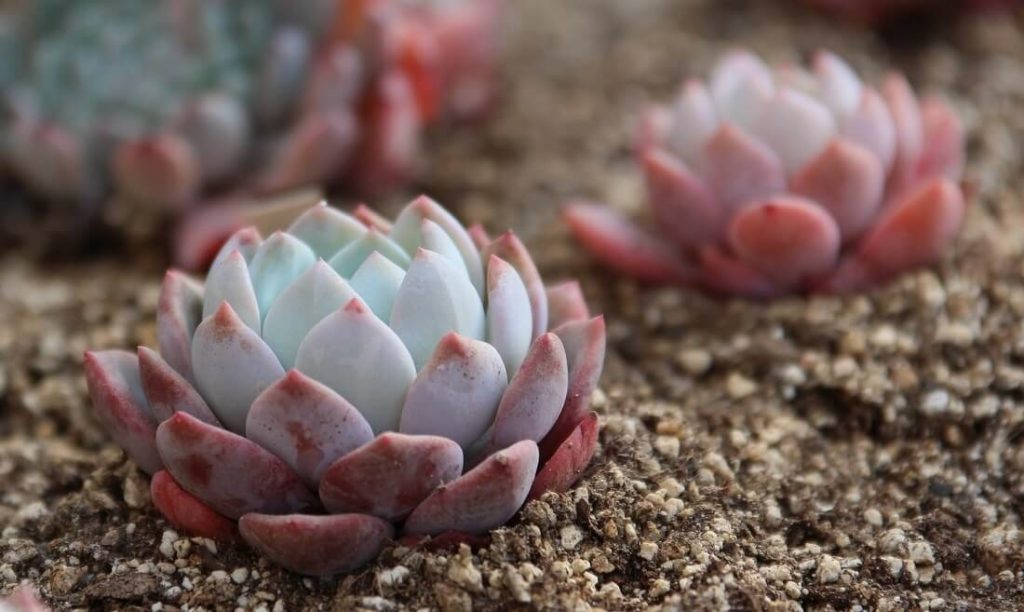
Fast-draining soil for succulents is absolutely, positively a must. It is critical for the health of your plants. Proper watering for succulents is entirely dependent upon good succulent soil. If you try to use regular potting soil or just dig up dirt from the garden, your succulents will be living on borrowed time. The first mistake you make with watering, the first bit of stress — they simply will not grow well without the right succulent soil. My detailed post on succulent soil explains the many benefits plants derive from soil. It includes information on how to customize a pre-packaged succulent or cactus soil mix to suit your specific climate, as well as a recipe to make your own soil.
Note: Regular potting soil or dirt straight from the garden will be damaging to your succulents! Succulent soil and amendments are an essential supply for succulents.
Pumice for Succulents
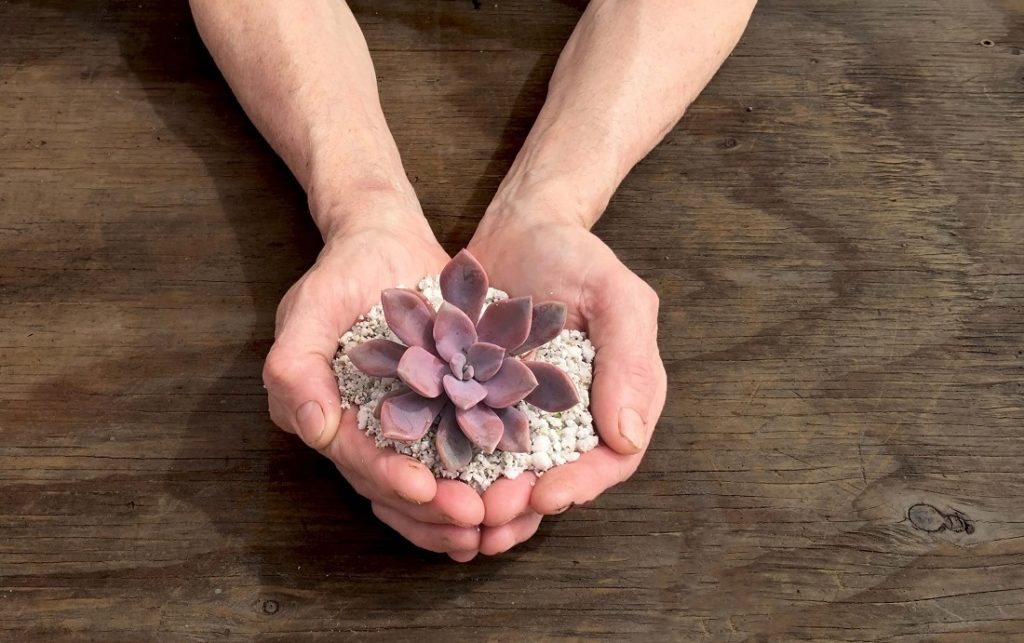
Pumice is an essential ingredient in any good quality succulent mix, whether you purchase a pre-packaged soil or make your own. It’s a lightweight, volcanic rock that improves the drainage of the soil while adding a wealth of trace minerals in an easy-to-access form for your plants. Pumice actually absorbs tiny amounts of water and then slowly releases it to the surrounding soil as it dries out. Tiny air pockets also help to aerate the soil to the benefit of the plant’s roots. If your climate is very humid or you get a lot of rain, cut a pre-packaged succulent soil with pumice to improve the drainage. When planting cacti or particularly touchy succulents, mix in extra pumice with the soil.
Beware cheap substitutes. Perlite looks a lot like pumice, and most commercial succulent mixes use the cheaper perlite. But perlite is so very light in weight it quickly “floats” to the top of soil when you water. It abandons the soil around the roots and litters the top of the soil, where it provides no benefit. The larger, heavier particles of pumice stay nicely in place.
Coconut Coir for Succulents
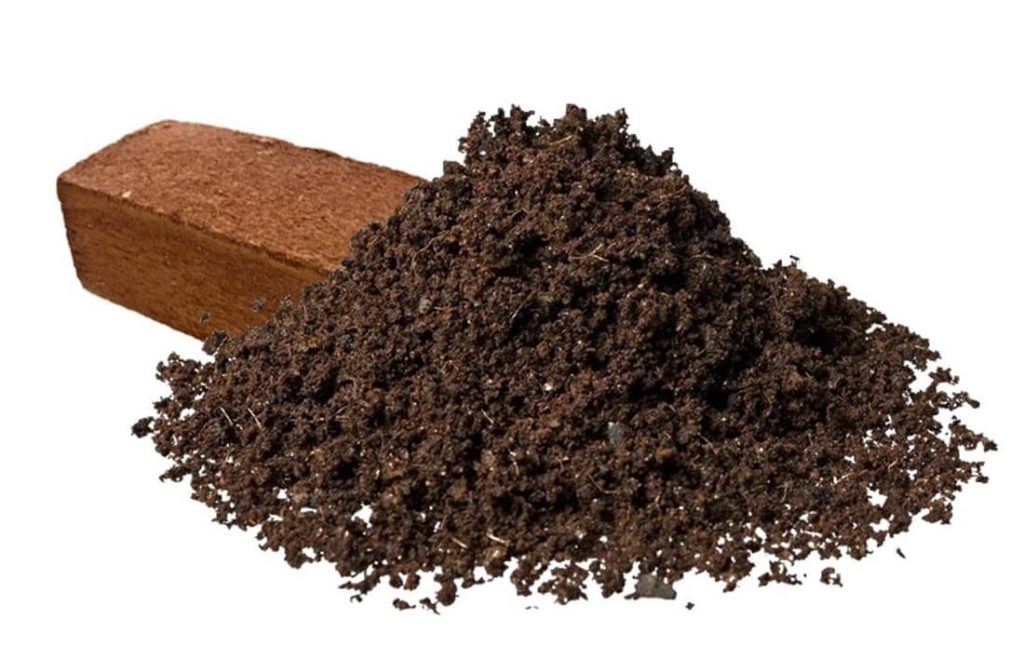
Coconut coir or coco coir is made up of the dry husks left behind when harvesting coconuts. It is an organic soil amendment that readily absorbs and releases water. Best of all, it absorbs water even when it’s completely dry. Have you ever had a potted plant in soil so dry the water just runs right off without being absorbed? That soil had no coco coir. Coconut coir is one of my essential succulent supplies because I use it for blending my own soil mix.
Beware look-alike substitutes. Coconut coir looks a lot like peat moss. Both are organic soil amendments that are beneficial in the garden but with important differences. Peat moss is used more widely in soil mixes, and it is part of the reason really dry soil cannot take up water. Peat moss makes the soil more acidic, while coconut coir is ph neutral. Coco coir is also far more sustainable than peat harvested from ancient bogs.
Worm Castings for Succulents
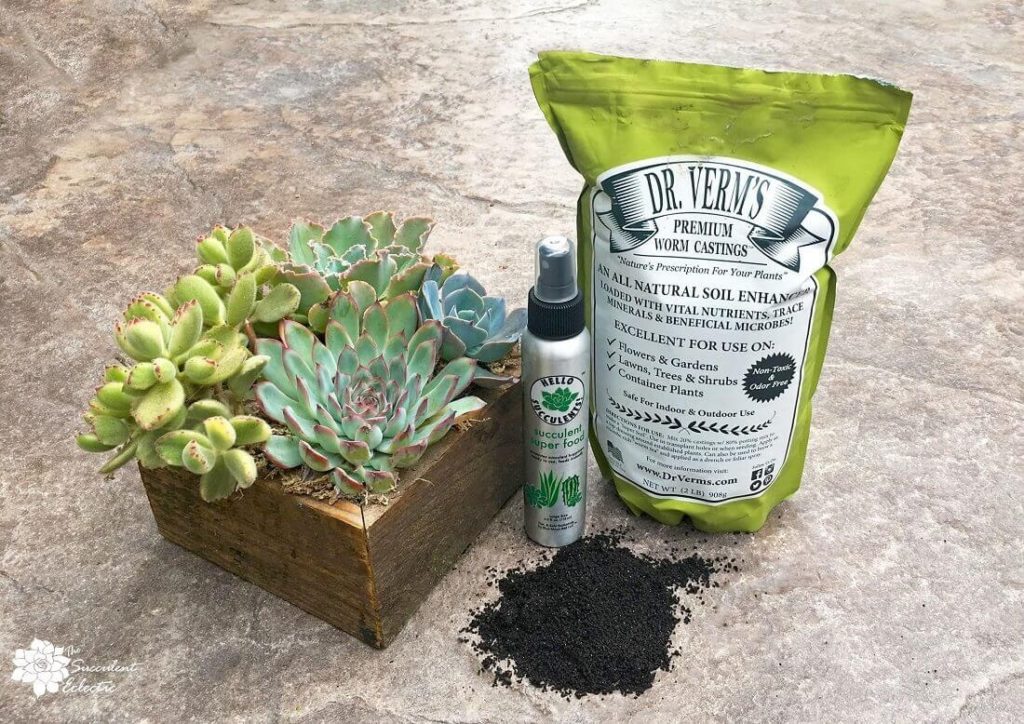
Worm manure, generally called worm castings, is an essential supply not just for succulents but for all your plants, indoors or out. It’s a nutritionally rich organic fertilizer for all your plants. But the effect of worm castings on insects is what makes it so essential for gardeners. Worm castings are rich in chitinase, an enzyme that dissolves an insect’s exoskeleton. Not only do worm castings kill insects like mealybugs, whiteflies and more on succulents — they actually prevent insects from feeding on the plants in the first place!
When I plant succulents or any type of plant, I mix in a handful of dry, odorless worm castings in with the soil. This way, the plant takes in trace amounts of chitinase, which spreads throughout the roots, stems, and leaves. Insects detect the presence of insect-killing chitinase in the plant and are discouraged from even landing on it, let alone feeding on it or laying their eggs. Not only does it ward off insects, but it feeds the plant. Win-win!
For planted succulents, apply a top dressing of dry worm casting to the soil. Every time you water, it will release the worm castings to the roots of your plant to feed and protect it.
Top Dressing for Succulents
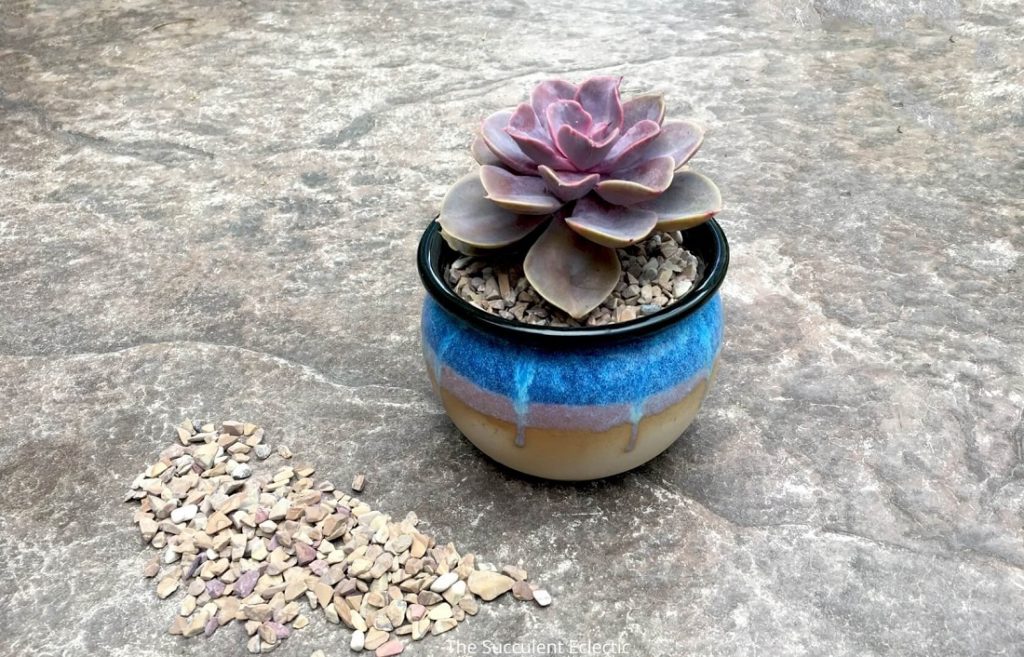
Top dressings for succulents consist of an even layer of inorganic matter like pebbles, crushed seashells, sand, or gravel that covers the surface of the soil. Succulent top dressings provide multiple benefits for the plant. Chief among them include keeping the plant clean, insulating the roots from fluctuations in temperature, and providing a barrier to egg-laying insects (for those who don’t use worm castings!) and to weeds. Coordinate the top dressing with either the plant or the pot to give the final planting a finished appearance.
Shade Cloth for Succulents
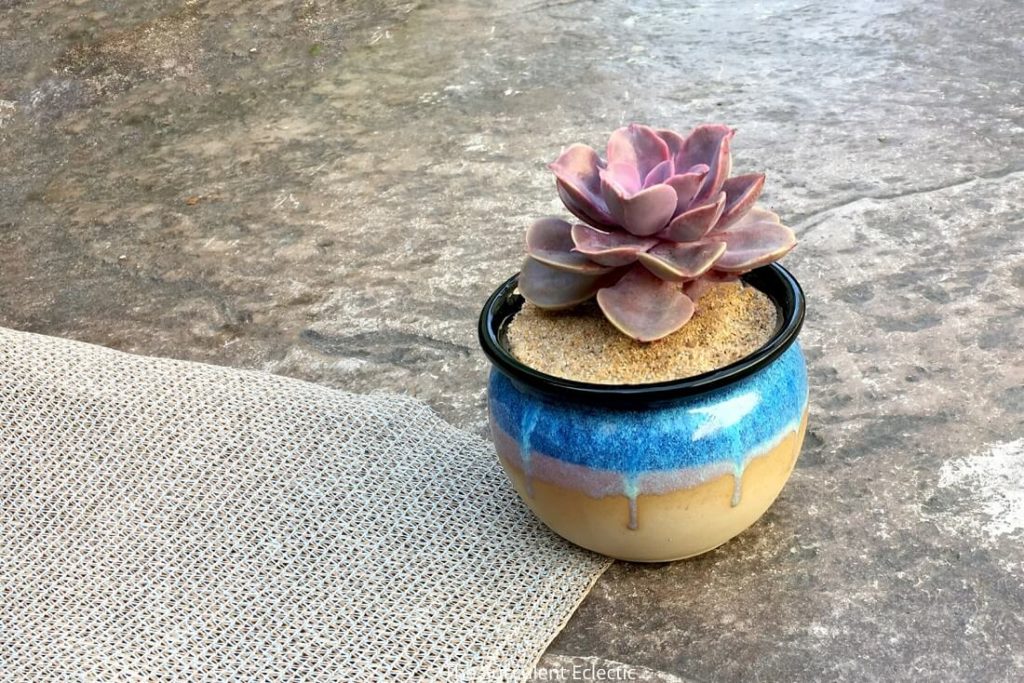
Succulents love sunshine, but that doesn’t mean every variety can tolerate full sun. And full sun exposure in one climate can be very different from another, hotter, drier climate. Even full-sun succulents can get sunburned when moved into direct sun too soon after being over-wintered indoors. Shade cloth is a great way to provide excellent lighting for your succulents outdoors — in any climate. Shade cloth is a special fabric designed to protect plants from sunburn by filtering out light and UV rays and preventing a buildup of heat. It allows bright, diffused light through while preventing sunburn. All large-scale succulent growers grow their plants under shade cloth. Whether you grow succulents under shade cloth year-round, just during the heat of summer, or while rooting cuttings or recent transplants, it is an invaluable succulent supply.
There you have it — 6 essential succulent supplies. Using these supplies makes it easier for me to water my succulents properly, ward off insects, provide the best lighting, fertilize, keep them clean and growing healthy and strong. Which of these do you use regularly — and which are new to you? Does it look like I missed something you consider essential? Please let me know! Just leave me a comment, and I’ll get right back to you!
Happy gardening!

P.S. For more succulent care information, please subscribe to The Succulent Eclectic. I’ll send you my FREE e-course 7 Steps to Succulent Success!
P.P.S. Why not join my Facebook Group for succulent lovers? We talk about succulent care, propagation, succulent identification, and design. It’s a warm and welcoming group that would love to meet you!
